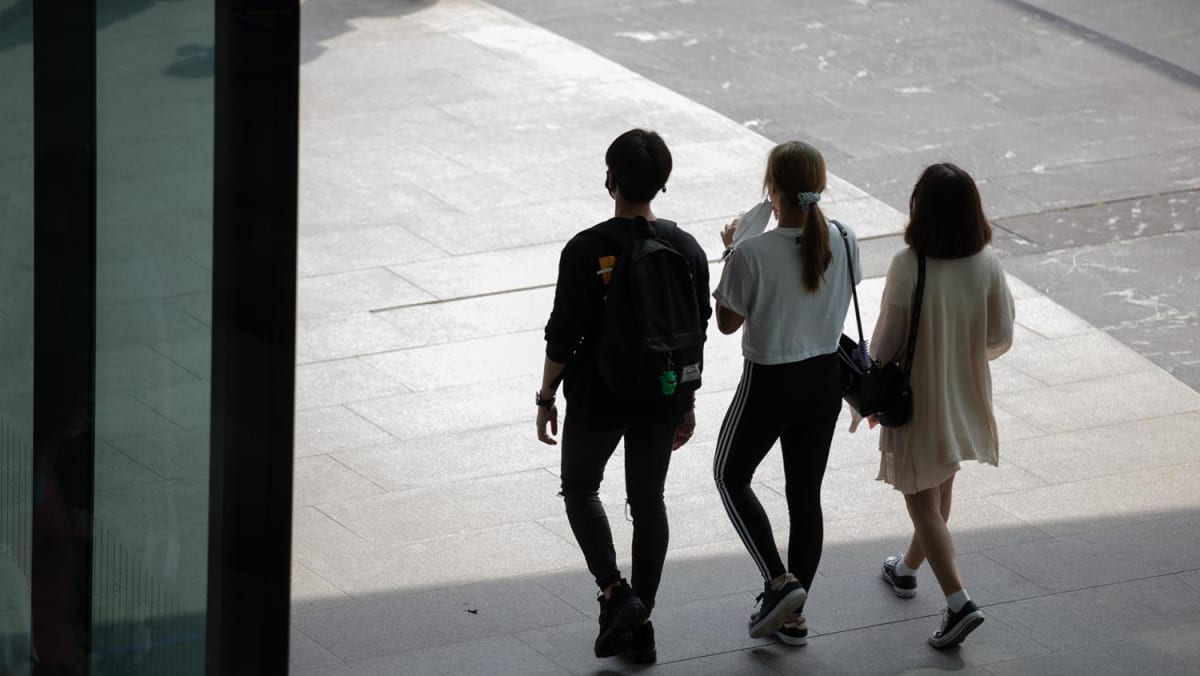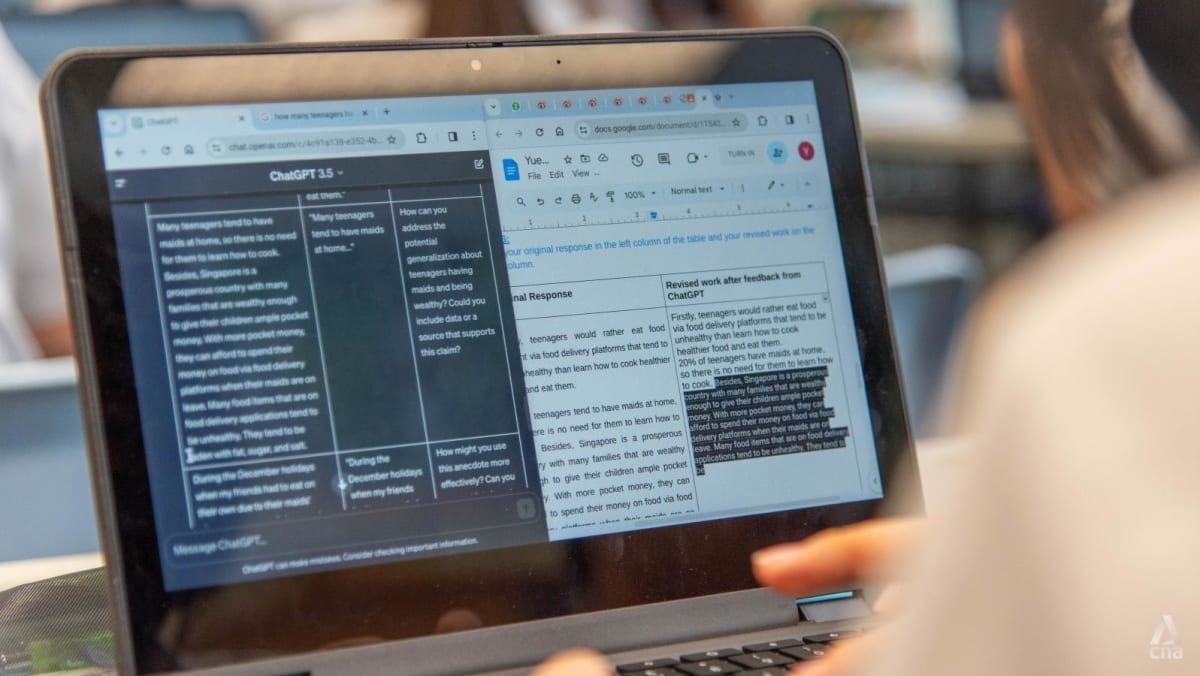SINGAPORE: Secondary 2 students at Manjusri Secondary School had a new English teacher last month.
When the students handed in their work, the teacher could attend to them all at the same time and simultaneously give each student personalised feedback. The teacher even posed each of them different questions to help them revise and improve their work.
Obviously, a human teacher cannot be in more than one place at one time. But ChatGPT can.
In the English lesson for Secondary 2 G3 students that CNA attended on Jan 31, students asked ChatGPT for feedback on a paragraph that they had each written. The paragraph was based on three types of persuasive appeals – pathos, ethos and logos – that they learnt in a previous lesson.
Before starting the exercise, (human) English teacher Erica Reyes Rodriguez took them through the lesson objectives and asked: “Why do we ask ChatGPT to give us feedback through questions instead of asking it to edit our work for us?”
A few students already knew the answer: “So that we can learn how to improve on our own.”
Pleased with the response, Ms Rodriguez reminded the 13- to 14-year-olds that the questions from ChatGPT were meant to help them further their thinking.
The students were given specific prompts to key into ChatGPT to set the tone for the feedback.
“You are a master teacher teaching English in Singapore for Secondary 2 Express students. I will provide you with details about my task, and it will be your job to respond with feedback to my answer,” the first prompt read.
Students asked for feedback through metacognitive questions – focused on reasoning and thinking skills – to help them revise their drafts.
Students also told ChatGPT about the topic: To persuade others to agree or disagree that teenagers are careless with their diet. They asked the chatbot to present the information in a table, highlighting specific sentences that need revision and questions that will improve their work.
Ms Rodriguez and Ms Faith Ong, another teacher who joined in to observe the lesson, left the students to their own devices but occasionally checked in on their progress. After they got their respective questions from ChatGPT, students were told to choose ones that addressed an area of weakness in their original answer or provided something specific to work on.
The students then picked out two questions they wanted to use to improve their original paragraphs and had to justify why they chose them, before rewriting their work.
Enzo Sembiring Kembaren, 13, who told a personal story of adding extra salt to his fast-food meal, picked: “How can you enhance the emotional appeal of your personal experience to make it more relatable and impactful to your readers?”
This question would help improve his story and increase the impact on a teenage reader, he thought.
Enzo used this question to rework his draft, going into deep detail about how he could feel his heart pumping like a jackhammer and poison flowing to his brain, a far more dramatic retelling than his original piece. His classmates chortled at the additional details.









.jpg?itok=5INs3RpZ)


